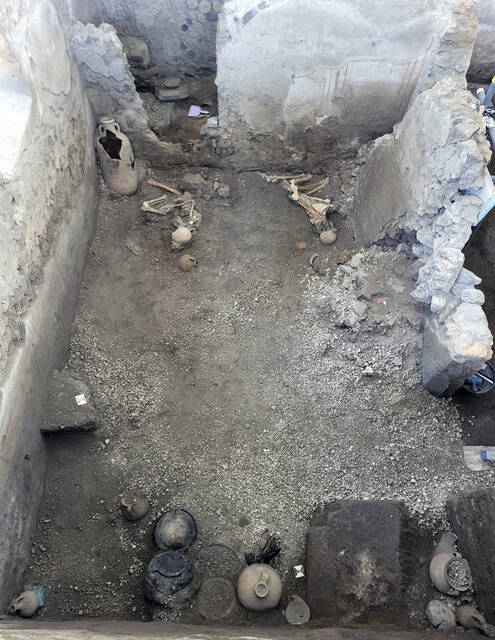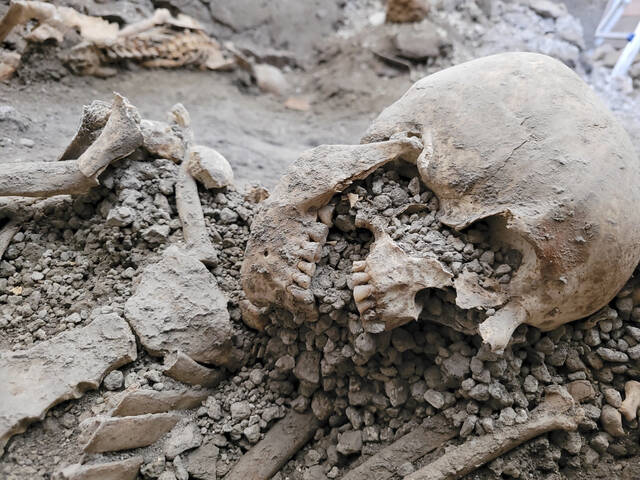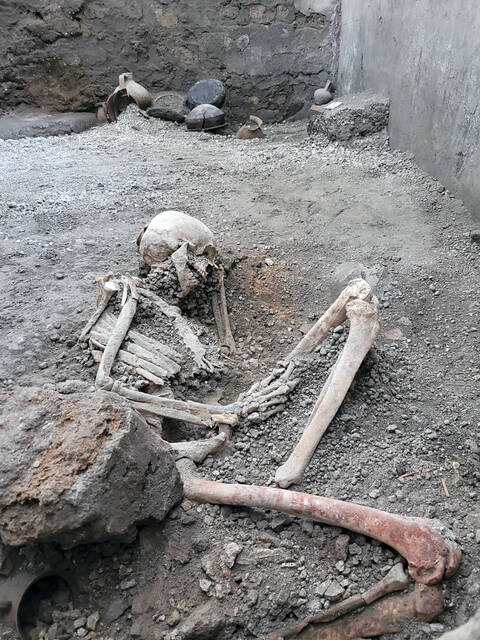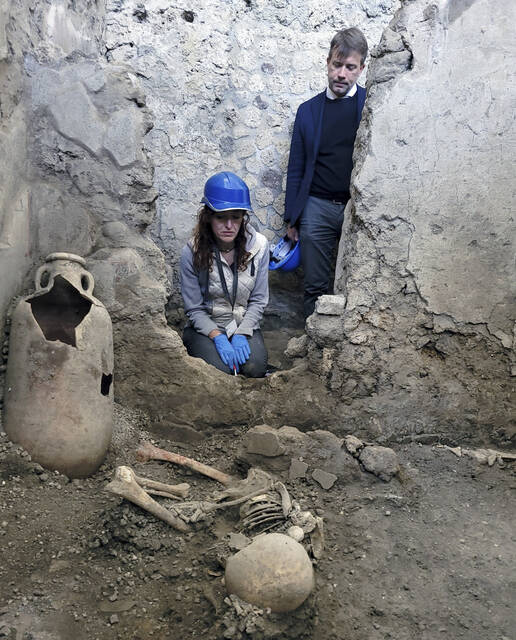Skeletons found in Pompeii ruins reveal deaths by earthquake
MILAN — The discovery of two skeletons buried beneath a collapsed wall in the Pompeii archaeological site point to deaths by powerful earthquakes that accompanied the devastating eruption of Mount Vesuvius in the first century, experts said Tuesday, in addition to the victims of volcanic ash and gas.
The two skeletons believed to be men at least 55 years old were found in the Casti Amanti, or House of Chaste Lovers, beneath a wall that collapsed before the area was covered in volcanic material. The area was likely undergoing reconstruction work at the time of the eruption in A.D. 79, following an earthquake a few days earlier.
“In recent years, we have realized there were violent, powerful seismic events that were happening at the time of the eruption,” said Gabriel Zuchtriegel, director of the Pompeii Archaeological Park.
New archaeological techniques and methodology “allow us to understand better the inferno that in two days completely destroyed the city of Pompeii, killing many inhabitants,” he added, making it possible to determine the dynamic of deaths down to the final seconds.
More than 1,300 victims have been found in the archaeological site south of Naples over the last 250 years.
Remove the ads from your TribLIVE reading experience but still support the journalists who create the content with TribLIVE Ad-Free.






